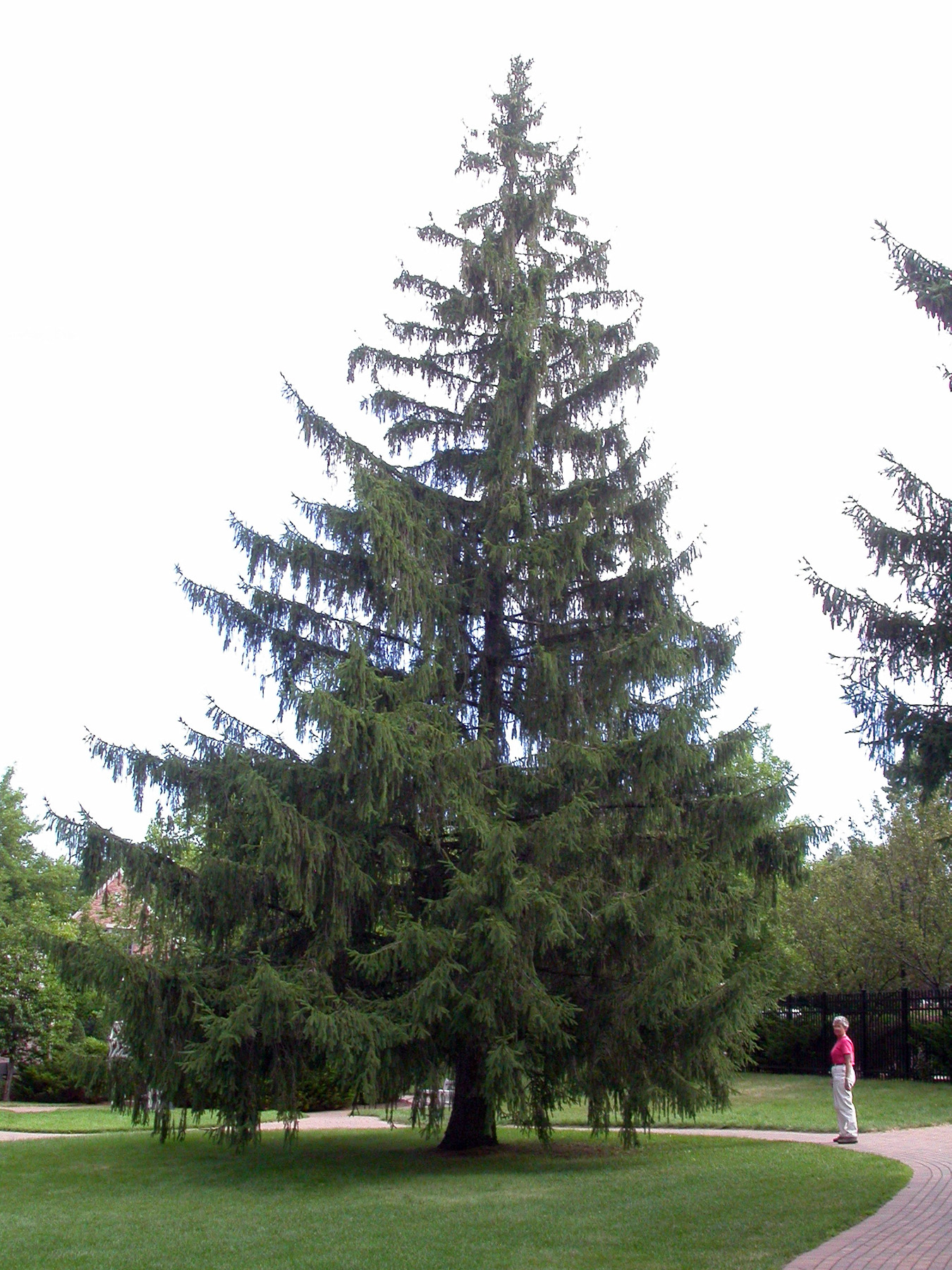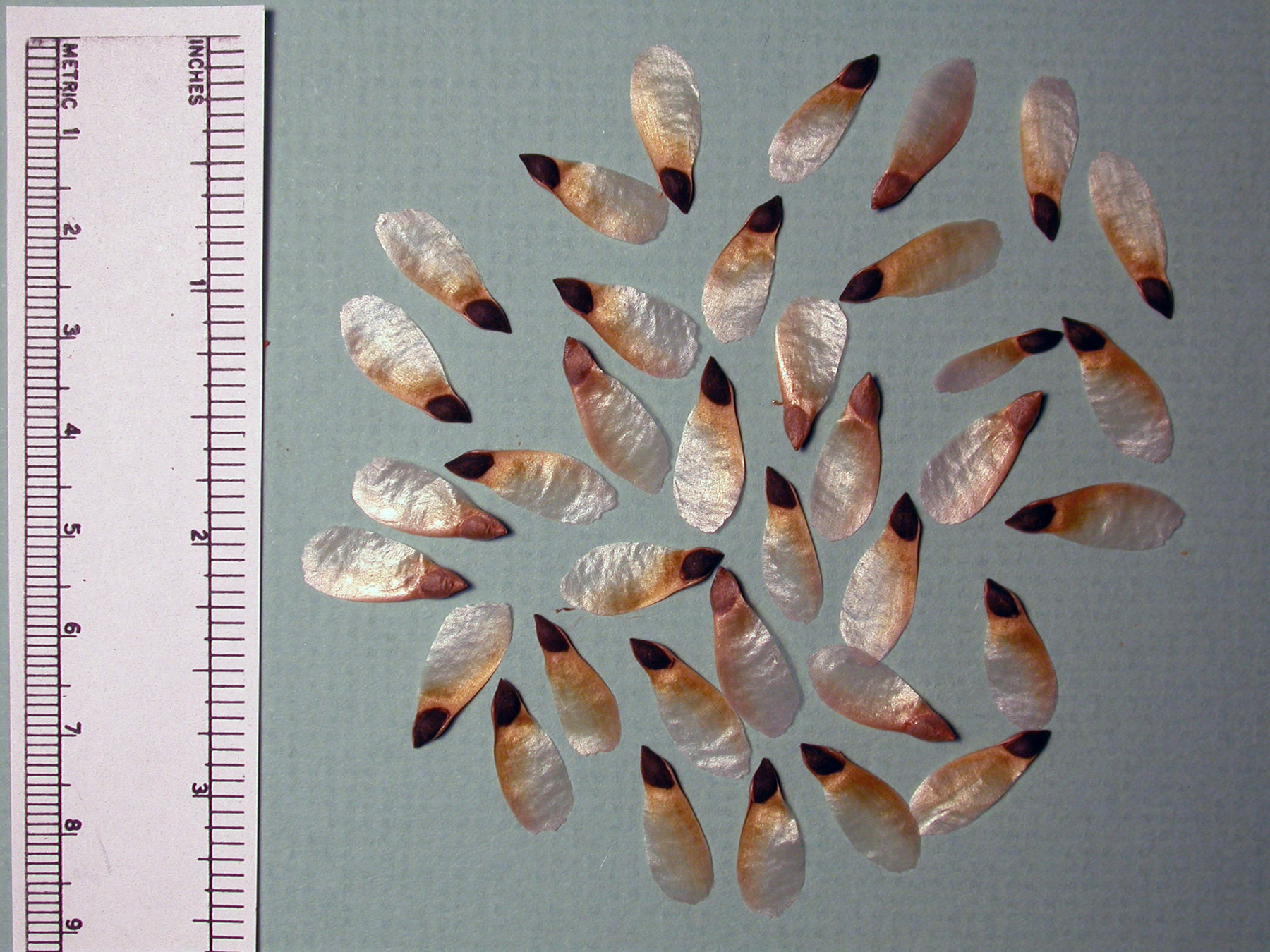Door to Nature: The Symmetry of Norway Spruce Cones
- Share
- Tweet
- Pin
- Share

As long as I can remember evergreen tree cones have been a traditional part of the decorations for the holiday season.
Most people don’t think of a flower when they pick up a pine cone any more than they do when they eat an apple. The intricate shapes of cones fascinate people, while the lip-smacking goodness of an apple is one of life’s greatest pleasures.
Each, however, may be traced back to a flower. An apple’s relationship to a blossom is obvious, but not so the pine cone.
Strictly speaking, conifers lack flowers as most people know them. Botanically, an evergreen tree has two kinds of flowers: staminate and pistillate. The similarity between the words “staminate” and “stamen” leads one to sense that these, the male flowers, bear pollen.

A mature Norway spruce has up-turned branches and a pointed top.
Pistillate flowers have pistils that are in reality the seed producers. Obviously, these are the cones on the conifers with which most people are familiar. The tiny male flowers, or cones, dry up quickly after releasing their pollen and fall to the ground. They are very small, disappear quite rapidly and don’t resemble the seed-bearing female cones whatsoever.
Most evergreen cones have matured already and have dropped to the ground or will at least be releasing the seeds that will be carried away from the parent plant by the wind. Evergreen trees are gymnosperms and are said to have naked seeds that are generally contained in cones at the base of the scales.
The tiny seeds, two per scale, are simply wedged under each and the scales overlap like shingles on a roof. In that sense, the seeds are naked since they are not contained within a fruit, such as are the seeds of an apple.
Cones have interested me ever since I was a child. Several large Norway spruces grew on my folks’ property in Kewaunee as well as in our neighbors’ yards. My great uncle Joseph Lukes owned several beautiful cuckoo clocks that operated on the gravity produced by weights that were fashioned after the Norway spruce cones, hence their nickname of “cuckoo clock” cones.
By the way, the predominant conifer in the famous Black Forest of Europe, where so many cuckoo clocks have been made for centuries, is the Norway spruce.
These trees, although planted widely in America, are native to Europe. The large cones of the Norway spruce, like other cones, have their scales arranged in beautiful geometric spirals. Fibonacci (fib-o-NAH-chee), a mathematician who lived in Pisa, Italy, from 1170 to 1230, apparently was fascinated by these and other spirals of nature. He observed the spirals in the petals of a flower, scales on a spruce cone, thorns on a rose bush, as well as leaves of many garden vegetables.
He became famous for the mathematical progression he produced which now is referred to as the Fibonacci series: 1, 1, 2, 3, 5, 8, 13, 21, 34, 55, 89, 144, 233, 377, and so on. Notice that each number in the list is the sum of the two preceding numbers.
If a fraction is made using successive numbers – for example, 13/21 or 21/34, the denominator always turns out to be very close to 1.618 times that of the numerator. The golden ratio, 1.618, referred to as phi, is in honor of Phidias, the famous ancient Greek sculptor. The long side of the Parthenon in Greece is 1.618 times the shorter side!
The leathery scales of the Norway spruce cones are arranged in two distinct spirals, one clockwise and the other counterclockwise. Tape a piece of string to the top of one of the cones and, moving downward, follow the edges of the shallow spiral first. You should be able to encircle the cone about four or five times. Invariably there will be five rows of scales within each complete spiral.
Following the more steeply pitched spiral you should discover eight rows of scales between each complete spiral. These two sets of spirals are said to have a 5/8 arrangement. Look back at the Fibonacci series to see that five and eight are indeed consecutive numbers in that symmetrical and uniform ratio.
This imposing dark evergreen, the Norway spruce, is the tallest native tree of Europe, sometimes attaining a height of nearly 200 feet. They are fast growers and can add 40 feet of height in 20 years. Their cones are up to 8 inches long. Surely you have seen these symmetrical evergreens with graceful, slightly up-turned branches decorating farmyards and especially cemeteries throughout the Midwest.

The seeds of Norway spruce are called naked as they are not contained within a fruit like apple seeds.
From the amazing chambered nautilus shell to the lowly oxeye daisy, well-proportioned design based upon spirals has proved to be the most efficient arrangement in nature.
A number of years ago I sent to Corvallis, Ore., for a large selection of about 30 different evergreen tree cones to use in my teaching. The fascinating collection produced many good features for lessons through the years.
One cone in particular created an unusual amount of attention. My students had learned about the most massive tree of the entire world, the “General Sherman” giant sequoia. Imagine our surprise to find that its cone was among the smallest in the collection.
During our 1993 trip to Sequoia and Kings Canyon National Parks in California, Charlotte and I proved to ourselves that “seeing was believing” as we held in one hand a small cone of the gigantic General Grant tree, the nation’s Christmas tree, while standing awestruck, admiring its 267-foot height and its circumference at the base of more than 107 feet! How insignificantly small both of us felt at that memorable moment!
The largest cone in my collection, used for teaching, came from the sugar pine of the West. It measured about 16 inches long. David Douglas, great botanical explorer who the Douglas fir is named after, gave it the name sugar pine because the cone reminded him of the sugarloaves in a candy shop. Someday it would be exciting to see the tallest sugar pine in the world, about 270 feet, growing somewhere in the Siskiyou Mountains of Oregon.
We did manage, on our western trip, to visit the world’s largest Sitka spruce growing near the southeastern corner of Lake Quinault, south of the Olympic National Park in Washington. Imagine our surprise to find that the cones of this 191-foot giant were less than half the size of the cones of a Norway spruce.
Take a few minutes when decorating with evergreen tree cones this month to admire their symmetrical beauty and, above all, check their Fibonacci spirals!

